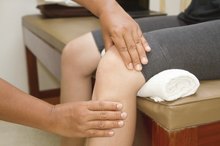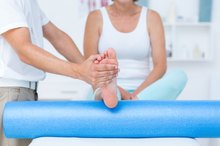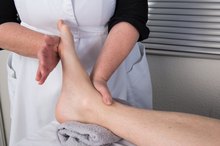Hip ORIF Rehab Exercises
The hip is a ball and socket joint and is susceptible to fractures. These bone injuries typically affect older people and commonly result from a fall. Hip fractures also occur in the younger population due to trauma, such as a motor vehicle accident or a fall from a high surface. Hip fractures in older people tend to occur near the ball portion of the hip joint, often requiring surgery to repair the bone. Rehabilitation with a physical therapist begins soon after surgery to restore motion and function of the hip.
Hip ORIF
Open reduction and internal fixation, or ORIF, is a surgical technique frequently used to treat hip fractures. It is usually performed within 1 to 2 days after injury. An incision is made, typically on the outside of the upper thigh, and muscles are cut to expose the injured bone. Screws and pins are drilled into the bone to hold the broken pieces together to allow them to heal.
- Open reduction and internal fixation, or ORIF, is a surgical technique frequently used to treat hip fractures.
- An incision is made, typically on the outside of the upper thigh, and muscles are cut to expose the injured bone.
Phase One
Exercise After Hip Replacement
Learn More
Rehabilitation exercises after hip ORIF typically occur in phases. Phase one exercises may begin the day after surgery to prevent muscles from tightening up. After hip ORIF, your doctor may limit the amount of weight you can put on your injured leg for several weeks. For this reason, phase one exercises are performed lying down or sitting. Ankle pumps -- bending your foot down and up repeatedly -- increase blood flow in your leg. This helps decrease your risk of developing a blood clot in your lower leg while your mobility is limited. Strengthening exercises are performed for your ankle and knee on the injured side. Range of motion exercises are performed for your hip joint to keep it from becoming too inflexible. However, the therapist may move your hip for you to protect the muscles that were cut during surgery.
- Rehabilitation exercises after hip ORIF typically occur in phases.
- However, the therapist may move your hip for you to protect the muscles that were cut during surgery.
Phase Two
Phase two rehab exercises following hip ORIF focus on increasing weight bearing through your injured leg. This phase typically starts around 2 weeks after surgery. Standing exercises may be performed using parallel bars, allowing you to support some weight through your hands. Weight shifting exercises involve slowly increasing the amount of pressure on your injured leg in forward, backward and side-to-side directions. Exercises from phase one are typically continued with resistance bands or cuff weights.
- Phase two rehab exercises following hip ORIF focus on increasing weight bearing through your injured leg.
- Weight shifting exercises involve slowly increasing the amount of pressure on your injured leg in forward, backward and side-to-side directions.
Phase Three
Exercises for Knee Rehabilitation After ACL Surgery
Learn More
Phase three rehab exercises begin about 6 weeks after surgery. By this time, you will probably be allowed to place full weight on your injured leg. Balance exercises are performed to prepare for walking without a cane or walker and on uneven ground. Strengthening exercises are continued to help you climb stairs and simplify getting into and out of a car or shower. Endurance exercises, including stationary biking, pool activities or a recumbent stepper, are incorporated into your program and may continue as part of your long-term fitness plan.
- Phase three rehab exercises begin about 6 weeks after surgery.
- Strengthening exercises are continued to help you climb stairs and simplify getting into and out of a car or shower.
Related Articles
References
- Journal of the American Geriatrics Society: Home-Based Leg Strengthening Exercise Improves Function One Year After Hip Fracture -- A Randomized Controlled Study
- Strategies in Trauma and Limb Reconstruction: Arthroplasty Versus Internal Fixation for Femoral Neck Fractures in the Elderly
- Physical Rehabilitation and Medicine: Design and Implementation of a Home-Based Exercise Program Post-Hip Fracture -- The Baltimore Hip Studies Experience
- Physical Therapy: Early Rehabilitation Following Surgical Fixation of a Femoral Shaft Fracture
- Loma Linda University and University of Pacific Doctorate in Physical Therapy Programs: Proximal Hip Fracture Open Reduction/Internal Fixation and Rehabilitation
- Essentials of Orthopaedics for Physiotherapist; John Ebnezar
Writer Bio
Aubrey Bailey has been writing health-related articles since 2009. Her articles have appeared in ADVANCE for Physical Therapy & Rehab Medicine. She holds a Bachelor of Science in physical therapy and Bachelor of Arts in psychology from the University at Buffalo, as well as a post-professional Doctor of Physical Therapy from Utica College. Dr. Bailey is also a certified hand therapist.









